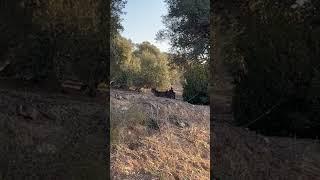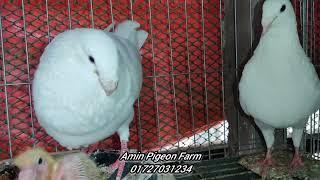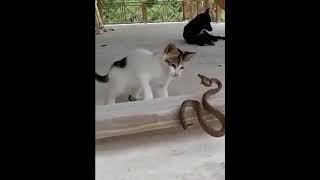????⛰????wellcome to my youtube channel????????
???? MASTER OFFICIAL 5 ????
Read and ????????????learn
????⛰WORLD WILDLIFE INFORMETION????????
Hi everyone this channel is only for examination and study and general knowledge purpose of students of other people's ----------‐------------------------------------------ ---------------
African rail : -
Its breeding habitat is marshes and reedbeds across eastern and southern Africa from Ethiopia to South Africa. Many birds are permanent residents, but some undertake seasonal movements in response to the availability of wetland.
Adults are 28-30 cm (11-12 inches) long, and have mainly brown upperparts and blue-grey underparts, with black-and-white barring on the flanks and undertail. This is the only Rallus species with a plain back. The body is flattened laterally to allow easier passage through the reeds. They have long toes, a short tail and a long slim dull red bill. The legs are red.
The African rail nests in a dry location in marsh vegetation, both sexes building the cup nest. The typical clutch is 2-6 heavily spotted creamy-white eggs, which are incubated by both sexes for about 20 days to hatching Immature birds are similar to the adults, but the blue-grey is replaced by buff. The precocial downy chicks are black, as with all rails.
These birds probe with their bill in mud or shallow water, also picking up food by sight. They mainly eat insects, crabs and other small aquatic animals.
African rails are secretive in the breeding season, but are easier to see than many other rail species, especially in the morning. They are noisy birds, with a trilled whistled treee-tee-tee-tee-tee call.
Reproduction
The breeding behaviors of many Rallidae species are poorly understood or unknown. Most are thought to be monogamous, although polygyny and polyandry have been reported. [24] Most often, they lay five to 10 eggs. Clutches as small as one or as large as 15 eggs are known. [24] Egg clutches may not always hatch at the same time. Chicks become mobile after a few days. They often depend on their parents until fledging, which happens around 1 month old.[
Behaviour and ecology
In general, members of the Rallidae are omnivorous generalists. Many species eat invertebrates, as well as fruit or seedlings. A few species are primarily herbivorous. The calls of Rallidae species vary and are often quite loud. Some are whistle-like or squeak like, while others seem unbirdlike. Loud calls are useful in dense vegetation, or at night where seeing another member of the species is difficult. Some calls are territorial.
The most typical family members occupy dense vegetation in damp environments near lakes, swamps, or rivers. Reed beds are a particularly favoured habitat. Those that migrate do so at night.
Most nest in dense vegetation. In general, they are shy, secretive, and difficult to observe. Most species walk and run vigorously on strong legs, and have long toes that are well adapted to soft, uneven surfaces. They tend to have short, rounded wings, and although they are generally weak fliers, they are, nevertheless, capable of covering long distances. Island species often become flightless, and many of them are now extinct following the introduction of terrestrial predators such as cats, foxes, weasels, mongooses, rats, and pigs.
Many reedbed species are secretive (apart from loud calls), crepuscular, and have laterally flattened bodies. In the Old World, long-billed species tend to be called rails and short-billed species crakes. North American species are normally called rails irrespective of bill length. The smallest of these is Swinhoe's rail, at 13 cm (5.1 in) and 25 g. The larger species are also sometimes given other names. The black coots are more adapted to open water than their relatives, and some other large species are called gallinules and swamphens. The largest of this group is the takahe, at 65 cm (26 in) and 2.7 kg (6.0 lb).
The rails have suffered disproportionally from human changes to the environment, and an estimated several hundred species of island rails have become extinct because of this. Several island species of rails remain endangered, and conservation organisations and governments continue to work to prevent their extinction.
Threats and conservation
Due to their tendencies towards flightlessness, many island species have been unable to cope with introduced species. The most dramatic human caused extinctions occurred in the Pacific Ocean as people colonised the islands of Melanesia, Polynesia, and Micronesia, during which an estimated 750 1800 species of birds became extinct, half of which were rails.
1) https://youtube.com/shorts/_bR6C_6sxts?feature=share
2) https://youtube.com/shorts/38WaGlRY9cc?feature=share
3) https://youtube.com/shorts/Jmji36jDNpo?feature=share
#africanrail
#birdportal
#masterofficial5
???????? Thanks for watching my video ????✌
???? MASTER OFFICIAL 5 ????
Read and ????????????learn
????⛰WORLD WILDLIFE INFORMETION????????
Hi everyone this channel is only for examination and study and general knowledge purpose of students of other people's ----------‐------------------------------------------ ---------------
African rail : -
Its breeding habitat is marshes and reedbeds across eastern and southern Africa from Ethiopia to South Africa. Many birds are permanent residents, but some undertake seasonal movements in response to the availability of wetland.
Adults are 28-30 cm (11-12 inches) long, and have mainly brown upperparts and blue-grey underparts, with black-and-white barring on the flanks and undertail. This is the only Rallus species with a plain back. The body is flattened laterally to allow easier passage through the reeds. They have long toes, a short tail and a long slim dull red bill. The legs are red.
The African rail nests in a dry location in marsh vegetation, both sexes building the cup nest. The typical clutch is 2-6 heavily spotted creamy-white eggs, which are incubated by both sexes for about 20 days to hatching Immature birds are similar to the adults, but the blue-grey is replaced by buff. The precocial downy chicks are black, as with all rails.
These birds probe with their bill in mud or shallow water, also picking up food by sight. They mainly eat insects, crabs and other small aquatic animals.
African rails are secretive in the breeding season, but are easier to see than many other rail species, especially in the morning. They are noisy birds, with a trilled whistled treee-tee-tee-tee-tee call.
Reproduction
The breeding behaviors of many Rallidae species are poorly understood or unknown. Most are thought to be monogamous, although polygyny and polyandry have been reported. [24] Most often, they lay five to 10 eggs. Clutches as small as one or as large as 15 eggs are known. [24] Egg clutches may not always hatch at the same time. Chicks become mobile after a few days. They often depend on their parents until fledging, which happens around 1 month old.[
Behaviour and ecology
In general, members of the Rallidae are omnivorous generalists. Many species eat invertebrates, as well as fruit or seedlings. A few species are primarily herbivorous. The calls of Rallidae species vary and are often quite loud. Some are whistle-like or squeak like, while others seem unbirdlike. Loud calls are useful in dense vegetation, or at night where seeing another member of the species is difficult. Some calls are territorial.
The most typical family members occupy dense vegetation in damp environments near lakes, swamps, or rivers. Reed beds are a particularly favoured habitat. Those that migrate do so at night.
Most nest in dense vegetation. In general, they are shy, secretive, and difficult to observe. Most species walk and run vigorously on strong legs, and have long toes that are well adapted to soft, uneven surfaces. They tend to have short, rounded wings, and although they are generally weak fliers, they are, nevertheless, capable of covering long distances. Island species often become flightless, and many of them are now extinct following the introduction of terrestrial predators such as cats, foxes, weasels, mongooses, rats, and pigs.
Many reedbed species are secretive (apart from loud calls), crepuscular, and have laterally flattened bodies. In the Old World, long-billed species tend to be called rails and short-billed species crakes. North American species are normally called rails irrespective of bill length. The smallest of these is Swinhoe's rail, at 13 cm (5.1 in) and 25 g. The larger species are also sometimes given other names. The black coots are more adapted to open water than their relatives, and some other large species are called gallinules and swamphens. The largest of this group is the takahe, at 65 cm (26 in) and 2.7 kg (6.0 lb).
The rails have suffered disproportionally from human changes to the environment, and an estimated several hundred species of island rails have become extinct because of this. Several island species of rails remain endangered, and conservation organisations and governments continue to work to prevent their extinction.
Threats and conservation
Due to their tendencies towards flightlessness, many island species have been unable to cope with introduced species. The most dramatic human caused extinctions occurred in the Pacific Ocean as people colonised the islands of Melanesia, Polynesia, and Micronesia, during which an estimated 750 1800 species of birds became extinct, half of which were rails.
1) https://youtube.com/shorts/_bR6C_6sxts?feature=share
2) https://youtube.com/shorts/38WaGlRY9cc?feature=share
3) https://youtube.com/shorts/Jmji36jDNpo?feature=share
#africanrail
#birdportal
#masterofficial5
???????? Thanks for watching my video ????✌
- Catégories
- Chats de Race American Bobtail
- Mots-clés
- shorts, ytshorts, gk question














Commentaires